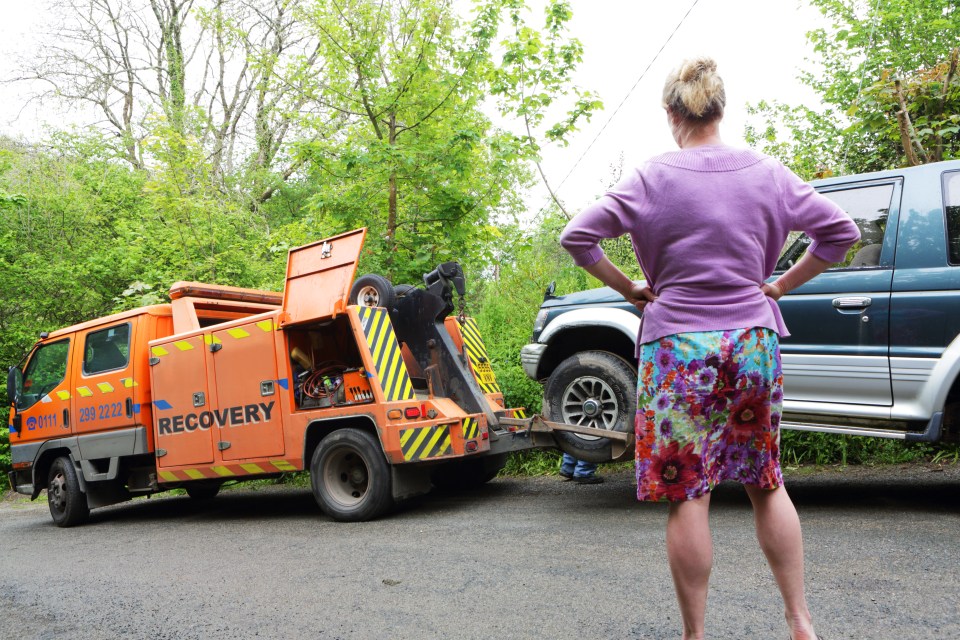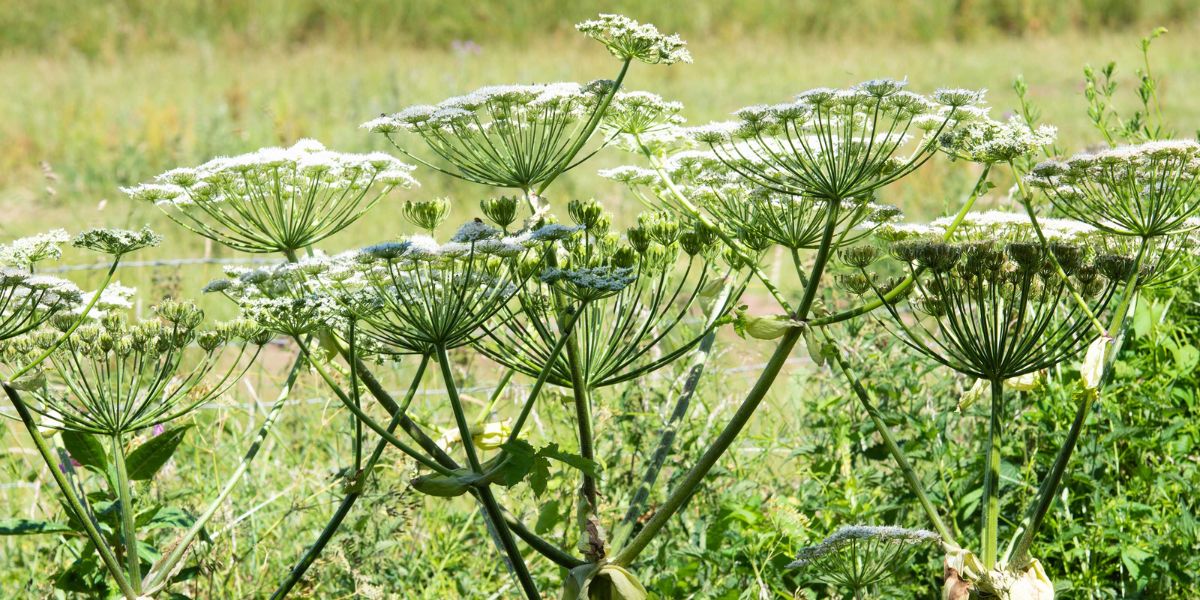WARNING! Toxic Giant Hogweed Spreading Rapidly in Minnesota
Minnesota is facing a major ecological and public health concern as Giant Hogweed, a harmful invasive species, spreads fast throughout the state. Giant Hogweed is known for its towering height and huge, umbrella-shaped white flowers, but its toxic sap can cause intense blistering, long-term scars, and even blindness.
Environmental authorities are advising homeowners to stay watchful and report any sightings of this dangerous plant. The fast expansion of Giant Hogweed endangers local ecosystems and biodiversity, necessitating immediate action from both the public and officials to reduce its impact and ensure safety.
Understanding Giant Hogweed
Giant hogweed is a towering plant that is endemic to the Caucasus and Central Asia. It was first imported to North America as an ornamental garden plant, but it has since escaped cultivation and become invasive. Giant Hogweed is recognizable by its huge size, which can reach 14 feet, and its broad, umbrella-shaped white flower clusters. It is not just an ecological annoyance, but also a public health concern.
The plant’s sap contains toxic compounds called furanocoumarins, which can cause severe skin responses when exposed to sunlight. These responses, known as phytophotodermatitis, can cause painful blistering, long-term scarring, and even blindness if the sap comes into contact with the eyes. The effects are increased by UV radiation, making outdoor activities hazardous while the plant is present.
Spread in Minnesota
Reports of Giant Hogweed in Minnesota have increased in recent months, with sightings confirmed in several counties. The Minnesota Department of Agriculture (MDA) reports that the plant spreads mostly through its seeds, which can be transmitted by wind, water, or human action. Each plant can yield up to 50,000 seeds, allowing for rapid dispersal across landscapes.
Environmentalists are especially concerned about the plant’s effects on local ecosystems. Giant Hogweed competes with native vegetation, diminishing biodiversity and modifying habitats. Its huge leaves can shade smaller plants, limiting them of sunlight and nutrition. This aggressive growth pattern endangers not only plant life but also animals that rely on native flora for sustenance and protection.
Health Hazards and Safety Precautions
Given the serious health dangers linked with Giant Hogweed, the MDA and public health officials are advising residents to exercise caution. If you come across the plant, do not touch it. Avoid using lawnmowers or trimmers near the plant since they can aerosolize the sap and increase the risk of contact.
If you suspect you’ve come into contact with Giant Hogweed sap, wash the afflicted area with soap and water right away and avoid direct sunlight. Seek medical assistance right once to address any potential reactions. Workers in gardening, landscaping, or outdoor enjoyment must wear protective gear, gloves, and eye protection.
What to Do if You Find Giant Hogweed?
Residents who see Giant Hogweed are asked to report it to the MDA’s Arrest the Pest program. Provide precise location information as well as images, if possible, to assist experts in confirming the identity. This information is critical for monitoring the spread and applying control actions.
The MDA warns against attempting to remove the plant yourself because of the high risk of sap exposure. Professional removal services are equipped to handle the plant safely, employing protective equipment and appropriate pesticides to prevent future spread.
Efforts to Control and Eradicate Giant Hogweed
Minnesota has started a number of steps to stop the spread of Giant Hogweed. The MDA collaborates with local governments, environmental organizations, and volunteers to map infestations and create strategic management programs. These initiatives include public education campaigns to raise awareness about the plant and its risks.
Chemical treatments and mechanical removal are being used in certain places, with ongoing monitoring to ensure that the plant does not reappear. Restoration programs are also ongoing to repair impacted habitats with native species, which will assist in restoring balance and biodiversity.
Community Involvement is Key
Community involvement is essential in controlling the spread of Giant Hogweed. Public knowledge and timely reporting can considerably improve the efficacy of control measures. By remaining knowledgeable and vigilant, residents may help protect themselves, their families, and Minnesota’s natural landscapes from this invasive pest.
Conclusion
Community involvement is critical in Minnesota’s battle against Giant Hogweed. Public knowledge and prompt reporting of sightings can greatly help control efforts. By being aware and attentive, residents can help preserve their health and Minnesota’s natural ecosystems from this invasive menace, safeguarding the state’s landscapes’ safety and biodiversity for future generations.











